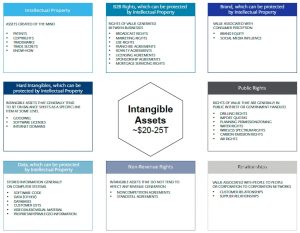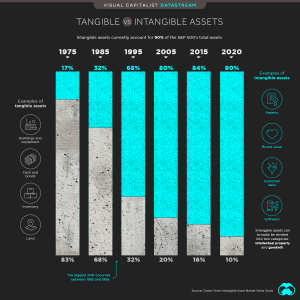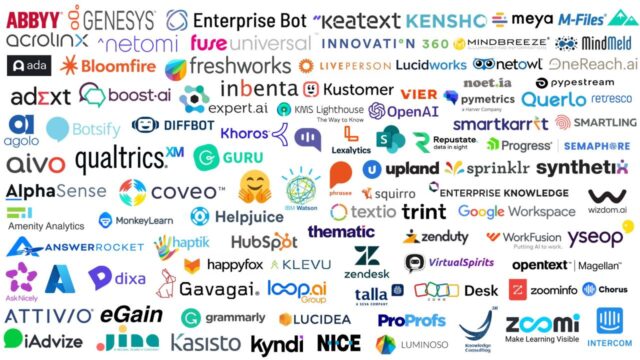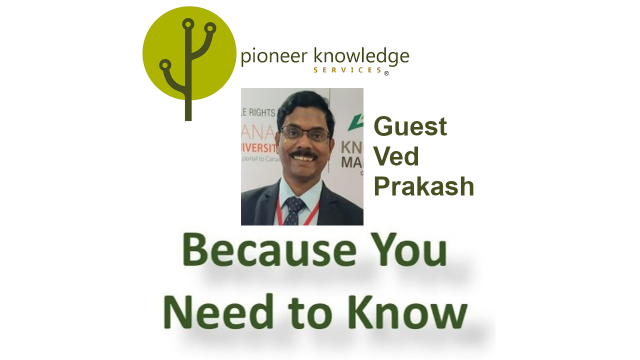
Knowledge retention and why it is needed
Knowledge retention is retaining the knowledge of an individual, role, or team to ensure the organization’s unique and critical knowledge (or capabilities) remain with the organization.
The value of intangible assets
Most organizations know how to determine the net worth from their hard assets inventory, for example from the number of computers on hand, to the number of days it has materials for building inventory.
However, Intangible assets are harder to measure, as they are not physical assets. For S&P 500 companies in 2018, $21 Trillion in U.S. intangible assets was 84% of company value, according to a study1 conducted by Aon and Ponemon. In 2005, the value of intangibles was three times higher than tangibles. In 2018, this same value was five times greater. This was concluded from studying eight main groups of intangible assets (Figure 1).

According to a study2 by Ocean Tomo, intangibles now comprise 90% of the value of S&P 500 companies (Figure 2). This leaves tangibles, such as buildings, equipment and real estate making up just 10% of the Index’s company value.

Over the last 35 years, the percentage of intangible asset value of the S&P 500 has almost tripled. From 1985 to 1995, intangible asset value more than doubled, from 32% to 68%. After that, it has been a steady upwards trend. 2015 to 2020 saw another 6% jump, from 84% to 90%.
“There are reasons to suggest that influence of tech and thus intangible assets has more steam in its engine,” reports Visual Capitalist. “The looming 5G revolution, more internet users on the horizon, and the powerful potential of new technologies are all supporting considerations.”
“Over the past half century, we have witnessed a somewhat silent revolution in terms of what factors are really driving business valuations,” reports Forbes. “As the global economy has gradually shifted away from an industrial base and focuses more on services and knowledge, enter the age of intangible asset, as an increasingly vital component of corporate worth.”
Retaining knowledge as an intangible asset
One such intangible assist is the knowledge created in the human mind. Ways to utilize this knowledge are to use hive methods to gain more knowledge or solve a problem. This can be done through different approaches and focus areas:
- Person (including previous roles and often even personal and professional knowledge).\
- Role (focused on a current role).
- Task/capability (focused on a sub-set of a current role).
To do this, the organization needs to plan. There are well-known knowledge retention approaches, but the first step is to understand the existing culture, as well as overall knowledge management strategy. Given that context, and the business need for knowledge retention, one of the knowledge retention approaches can be determined as fit-for-purpose:
- Analyze and understand overall organizational culture and strategy.
- Analyze and understand overall knowledge management strategy and plan.
- Determine which of the knowledge retention approaches is fit-for-purpose.
Knowledge retention approaches
A few examples of knowledge retention approaches are the After Action Review (AAR), Appreciative Inquiry (AI), KMAP, Knowledge Jam, knowledge retention framework and knowledge retention maturity model, left seat/right seat ride, and World Café/knowledge café.
The military developed the After Action Review (AAR), but it is one of the tools used in the civilian business model. It is a non-blame approach to identifying how an event or process went. It looks at what was supposed to happen versus what happened. What are the differences between what was supposed to happen and what happened, and how can we learn from those differences?
Appreciative Inquiry (AI) is another method it uses an affirmative topic to define what it is to discover, asking about the best of what it is to what it could be. It looks at the design of what the plan will entail, and then it goes to delivering that plan and imagining the product—the cycle repeats.
KM Action Map (KMAP)3 uses expert guidance to help build a plan and get approval. Then the process is documented throughout, with the approval of the expert and all the personnel working on it. It is shared only on a one-to-one basis, with mentor oversight.
A Knowledge Jam is centered around an event focused on discovering and capturing knowledge. Knowledge jams are based around an agenda, with one team asking questions of another team which has experience or knowledge. Careful notes are kept during the event, which all participants can see. Following the event, those asking the questions are able to utilize the knowledge which they gained. This is an effective way to transfer knowledge and to capture knowledge which may be more tacit in nature..
Another approach is the knowledge retention framework and a knowledge retention maturity model4. The framework aims to create a shared definition for knowledge retention, and the maturity model aims to create an approach for assessing a team or organization’s knowledge retention maturity. The maturity model outlines steps to increase the maturity of knowledge retention, based on data and evidence to support action.
Another tool is what the military calls a left seat/right seat ride. This is when two people work together closely. At the same time, one observes, and the other trains and then switches those dynamics at a certain point. Another way is to observe, which can include following an expert and systematically analyzing everything they do, but this will take a lot of time. It is better to practice the behavior or task that was observed, with expert supervision and feedback. Partner and joint problem-solving are when the organization’s employees work with the expert to analyze and address changes. Then, it is the individual who takes responsibility for a significant part of the expert’s role.
Another good way is to convene what is called a World Café. Many of these are facilitated by David Gurteen, who is considered a leading expert globally. The process begins with the first of three or more twenty-minute rounds of conversation for small groups of four (five maximum) people seated around a table. At the end of the twenty minutes, each member of the group moves to a different new table. They may or may not choose to leave one person as the “table host” for the next round, who welcomes the next group and briefly fills them in on what happened in the previous round. Each round is prefaced with a question specially crafted for the specific context and desired purpose of the World Café..
Another way to analyze the intangible capital is through various mapping techniques such as heat maps, Harvey balls, business capability heat map, diversity risk heat map, critical skills heat map, risk matrix maps, aspiration versus flight risk, or organizational network analysis (ONA).
Suppose an organization has a focus on pure data – how to share information and facilitate knowledge retention? In this case, they can look at the relational databases amongst all of their different areas where they store knowledge. This is a way to bring together the knowledge in such a way that allows it to be shared across the organization. One example is the Sears Roebuck approach5. The customer and the repair person both had the same information available to them online. Another example is Dr. Anthony Rhem’s Information Architecture (IA).
The US Army has also recently done this by combining multiple databases collecting individual information. These databases did not talk to each other, but by combining and not normalizing the data, the Army could then fill in the missing blanks through the correlation values of the information provided. This allows soldiers to understand and obtain as much information as possible, but receive information in a similar way to how ancestry.com provides hints to people in regard to ancestry databases.
Each of the above ways are an example of retaining knowledge created from what happens in an organization. It is up to the individual to identify how the organization wants to share this knowledge.
To build their capability, individuals can participate in courses taught by experts. Such courses can be anywhere from boot camps, to learning what is needed for certification, to a small class taught by a master of meetings such as Lucid Meetings. The Knowledge Management Institute (KMI) teaches several courses that can be accessed online, as does the KM Global Network (KMGN). The UK-based CILIP also has its competency-based KM Chartership initiative.
Why knowledge retention is important
So now that different ways to retain knowledge have been identified, let’s look at why this is an issue.
It takes time to get new hires up to speed6 on their job. It can take 20+ weeks for entry-level and mid-range positions and 26+ weeks for senior leaders, managers, and executives. The actual cost7 of employee turnover estimate as a percentage of annual salary is 20% for mid-range positions, and 21% for jobs requiring specific skills excluding areas such as doctors or lawyers. At senior and executive-level skills levels, the cost can be up to 213% of their annual salary.
The organization needs to identify exactly what information is required to be saved. This is where knowledge managers can come in and help lessen the total cost of employee turnover and the loss of intangible assets.
The US Army identified the following statistics in regard to employees leaving: approximately 2% are terminations, 36% are transfers, 43% are for retirement, 17% will quit, and unfortunately 2% are due to death. The study identified that employees leaving would create significant turnover: 23% would leave in one year, 2% of them will retire the following year, 23% will retire within 1 to 3 years, 15% 3-5 years, 19% in 5-10 years, and 18% in 10 or more years. This highlights areas of the organization where human resource specialists need to starts to look. Recent studies have also identified that people will leave an organization when their colleagues quit or retire.
Each of the knowledge retention approaches mentioned above has a level of polarity that needs to be examined. Is it individual or group? Written or conversation? Defined topics or emergent topics? Is someone is going to facilitate the knowledge retention process, or not? Are we creating an asynchronous or synchronous schedule to get together in today’s online world? Are there single or multiple outcomes? Will it be codified or embodied into the organization. or not? Is it sponsored by someone higher in the organization, or not? These decisions will determine the time, energy, and intensity level of the task at hand.
To judge the effectiveness of the return on the investment of time, energy, and intensity, look internally at how much it will cost the organization to replace somebody or their knowledge if the organization was to restart from scratch. One such example of this is Fogbank, a material used by the US Military. Atomic weapons do not fire without Fogbank, which was developed in the 1950s. The stockpiles of Fogbank begin to dwindle. When there was almost no Fogbank left, there were many unsuccessful attempts at recreating this unique product. The US Military then sought the external knowledge of the people who had initially worked on the project. The issue wasn’t found to be that they were not mixing the Fogbank correctly, but that they were creating Fogbank that was too pure. This was due to the difference in manufacturing standards from the 1950s to the 1990s.
Another example is today’s microbreweries recreating the ancient beer of civilizations gone by. They have taken micro-samples of beer from surviving remnants, and are scientifically trying to recreate how it was supposed to taste. If they follow traditional practices, it is almost guaranteed that they will get a close to original beer. But suppose they try to do it through the industrial methods of today’s society. In that case, the beer will become too pure and never obtain the flavor they were looking for.
Another way to look at the return on investment is to look at your staff’s productivity. If not replacing that one individual’s knowledge or saving it results in overworking the remaining staff, we lose knowledge assets more quickly through burnout.
Look at the economic value of how to create return on and judge the effectiveness of the cost of bonuses, interviewing, and having recruiters try to find a replacement of that individual. Is the organization willing to go over 30 days without that particular staff asset, or go 90 days? The further out the organization goes through multiple interviews and not selecting qualified or overqualified candidates just because they do not answer the questions the way the interviewer wants can affect your bottom line.
Suppose an organization can go 90+ days without that individual. In that case, the organization needs to look at whether it is a specific skill set that is hard to find, or if the position no longer needed. If it’s no longer needed, then the knowledge retention done on that particular person or position before they leave can be justified by that annual salary amount saved. The specific expertise can be retained through training.
Knowledge retention professionals exist everywhere, but a knowledge manager can identify the correct way to retain the knowledge for the organization, saving it money by narrowing in on that particular focus.
Header image source: Shutterstock.
References:
- Ponemon Institute LLC. (2019). 2019 Intangible Assets Financial Statement Impact Comparison Report. ↩
- Ocean Tomo. (2020). Intangible Asset Market Value Study. ↩
- Lindstaedt, S., Strohmaier, M., Rollett, H., Hrastnik, J., Bruhnsen, K., Droschl, G., & Gerold, M. (2002, December). KMap: Providing orientation for practitioners when introducing knowledge management. In International Conference on Practical Aspects of Knowledge Management (pp. 2-13). Springer, Berlin, Heidelberg. ↩
- Sanz, R., & Hovell, J. (2021). Knowledge retention framework and maturity model: improving an organization or team’s capability to retain critical knowledge. Knowledge Management for Development Journal, 16(1), 8-27. ↩
- Laudon, K. C., & Laudon, J. P. (2011). Essentials of management information systems. Pearson. ↩
- Rollag, K., Parise, S., & Cross, R. (2005). Getting new hires up to speed quickly. MIT Sloan Management Review, 46(2), 35. ↩
- Boushey, H., & Glynn, S. J. (2012). There are significant business costs to replacing employees. Center for American Progress, 16, 1-9. ↩







I am a newbee in KM.I started in 2012 and currently holds a franchise for KM for the Caribbean and Caicom Region.I have read your articles and I am very impressed with your career and focus km areas of research. I shall be appreciative of exploring some synergies with you.
Positively and Enthusiastically
Glenroy London